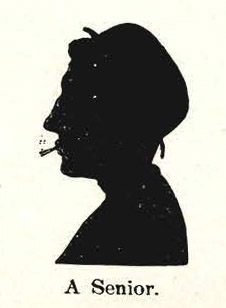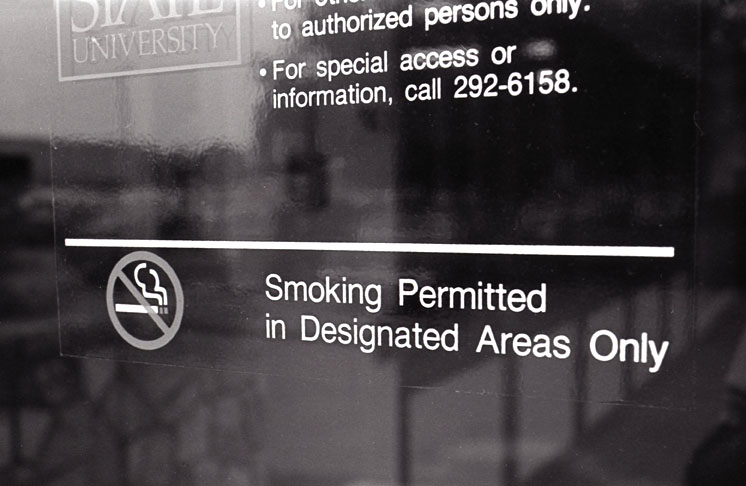Earlier this month, the University’s new tobacco-free policy took effect. It prohibits the use of all types of tobacco products on University-owned property, both inside and outside of buildings. This is the most widespread prohibition on tobacco products on the books yet at OSU. However, the University has banned tobacco on campus, at least to some extent, since 1900.
That year, in an update to the campus by-laws, Section 46 was amended to read: “The use of tobacco in any form in the lecture rooms, halls, corridors, door-ways, stair-ways, laboratories and libraries of the university is prohibited.” Until this time smoking was allowed in hallways, but not classrooms or labs.
There was a push in 1930 to have this rule revoked on the grounds that many campus buildings were fireproof, with an understanding that the ban would still hold for non-fireproof buildings, but it was unsuccessful.
At a Wednesday morning convocation in March 1901, then President William Oxley Thompson spoke out not only against the use of tobacco products but the “use of narcotics or stimulants in any form,” particularly for those men under the age of twenty-five. He argued that stimulants produced “a derangement of the nervous system and such a result cannot but affect any man’s abilities in later life.” Keep in mind that this predates the Surgeon General’s report by 63 years!
Campus interest in controlling tobacco use waned until the 1970s. In 1975 Associate Provost George Crepeau sent a memo to all faculty regarding a lack of enforcement of the 1900 ban. The memo mentions “students (and professors) …smoking in rooms with large red NO SMOKING signs posted.” It also discusses the “damage to floors in some buildings where cigaretts [sic] have been dropped and tiles have been burned.” There were many complaints to the Office of Academic Affairs and the President (then Harold Enarson). In 1977, Enarson announced a new focus on enforcing the no-smoking rules in compliance with a new state law regarding smoking in public places.
A University committee was formed to review the existing non-smoking policy and issued recommendations in 1986 that included banning the sale of tobacco products on University grounds and offering a smoke-cessation program for OSU employees who smoked.
After much public discussion among the University community regarding the proposed policy, the Board of Trustees approved it effective July 1, 1987. Some small changes were made, specifically that the smoking or non-smoking designation for single-occupant offices that could be enclosed were left up to the inhabitants. The Ohio Public Health Association awarded OSU a silver commendation in 1987 for this policy.
In 1991 OSU put together a new Committee to Review University Non-Smoking Policy. As a result of this committee, a new stricter policy was approved by the Board effective July 1, 1993. The updated policy extended the ban to all indoor areas, including St. John Arena and Ohio Stadium, with the exception of “specifically designated private residential space.” The ban
on the sale of cigarettes on campus was continued, as were smoking cessation services. A policy regarding alcohol and tobaccos advertising was issued in 1999, banning both from public campus spaces.
Prior to the current tobacco-free policy, the last major change was in response to the 2006 Smoke Free Workplace Law passed by the state of Ohio. This law prohibited smoking inside buildings or under outside overhands and within 25 feet of doors, windows, and air intakes. This same year, the entire Wexner Medical Center became tobacco free, even in outside spaces. The current policy took effect on January 1, 2014.













Recent Comments